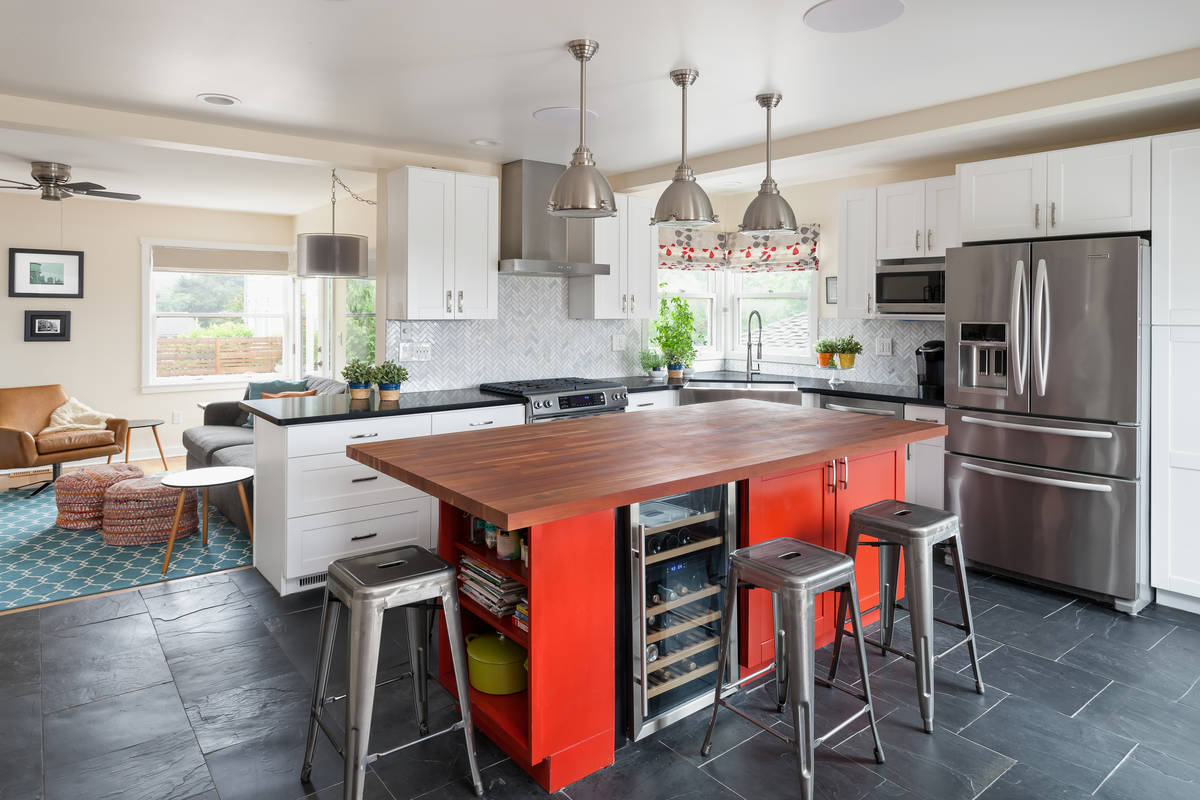Happy home will improve well-being
A happy home should be full of things that bring joy and fond memories. That sounds nice but may not be that easy to achieve.
Fortunately, Rebecca West, CEO of Seriously Happy Homes, is offering advice on how to design a happy home.
West led “How to Design a Happy Home” webinar at Las Vegas Market, held Sunday through Thursday at the World Market Center. Las Vegas Market is the leading home furnishings and gift market in the West.
So what does it take to design a happy home?
“I meet a client and say, ‘Let’s talk about the wholeness of your life and who you want to be and how your home can shape that,’” West said. “It’s not about the furniture or interior design but more about whether your home is working for you in the best way.
“My philosophy is that your home can directly improve your well-being and contentment with better health, sleep and relationships. This can ultimately decrease stress levels and lead to an all-around happy environment. I want people to recognize the power they have to change things. Why be surrounded by stuff you hate or that keeps you tied to old versions of yourself. Life is short. At the very least, be happy at home.”
West suspends all judgment when she meets clients to discuss their desire for change. She becomes a design psychologist who asks questions and listens carefully.
“Happy is different for all people, and it’s a very broad topic,” she said. “I define it as one’s health and well-being. Most of our clients are dissatisfied with their home and have never hired an interior designer before. They’re in transition — meaning divorce or remarriage or empty nesters — and want to make a change so their home works in their new life.
“Most choose one of two areas. One is the master bedroom. It’s private where they can wake up in a room that is happy, and it can set the tone for the rest of the day. The other is a public space in the home being shared by family and friends like walking in from the front door.”
West said one of her favorite clients was a woman who called from England after she moved into a converted Methodist chapel.
“She had a good local designer for most of the rooms, but this unique and timeless building was lacking the joy and whimsy that would make her smile,” West said. “We just infused her personal vision of happiness with light fixtures, colorful paint and hardware. Her home went from ordinary to delightful. Now it whispers of joy, possibility and hope.
“Remember, a little paint and a pillow here and there can change a home and make it transformative.”
One of the main questions West will ask a client is “How do you want to use your home?” The question is not about design but about lifestyle.
“I need to know what my client wants to feel or experience when he or she walks into their home,” she said. “I make the homeowner really think about what they want. Only then can I incorporate my ideas. The more every room fits a degree of happiness, the better. People need to think outside the box and not listen to design police. They need to make sure the house works for them and not vice versa.”
West has been creating happy homes for 13 years. She said a happy home can change over time, similar to one’s wardrobe.
“We change through the years,” she said. “What makes us smile and feel good at 35 years old becomes a bit different at 55. All it means is that the house may need some refurbishing. Maybe it’s just a new sofa or a different color for the front entrance wall.
“Customers have come to me five years after I did several rooms and now want to do the rest of the home. And that’s true with many of my clients. I start with one or two rooms and six months later move to other areas of the home.”
The same attention paid to the interior of the home applies to the exterior.
“Again, it’s a matter of the homeowner taking the time to think about what they want,” West said.
She asks clients how they want the house to look or how they want to react when they drive up to it. Do they want it to be grand and stately, to blend in with the neighborhood or maybe be whimsical? What experience do they want from their home when they arrive?
West has written “Happy Starts at Home,” a book that commits to a philosophy of buying fewer things and doing more to create a home that makes you smile. Besides beautiful photographs, there are a variety of self-assessment activities to connect financial, emotional and physical health to the home’s space to ensure that it nurtures one’s personal vision.
As she writes, “Use your home as a tool to make better changes happen in your life.”



























